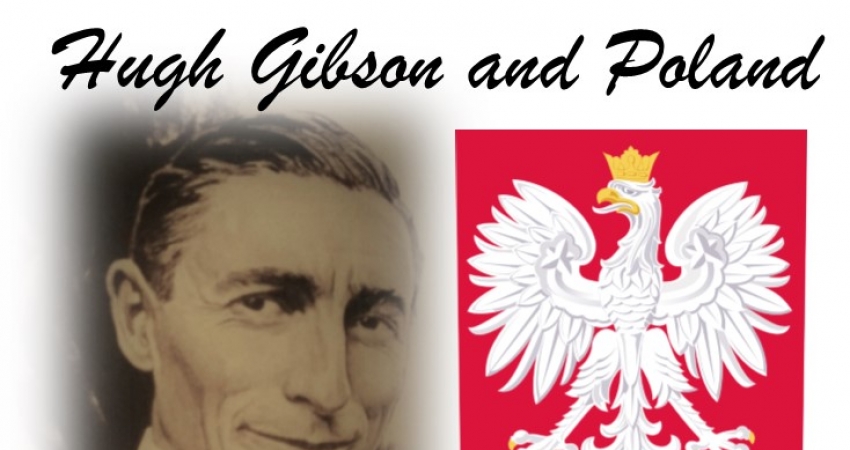
by Vivian Reed
After meeting Horodyski upon his arrival in Paris, April 1918, Gibson travelled to Rome with multiple purposes. During his weeklong stop in Bern, Switzerland, he assessed both the intelligence and propaganda activities of American personnel there. Once in Rome, Gibson continued his supervision of intelligence and propaganda activity, but also pursued Vatican support for Poland and the possibility of American representation.
Wednesday, May 1, 1918, Rome:
“At twelve found Horodyski at the Grand and learned that he has not got any more line on the situation. He plans to put in the next two days nosing about and we are to lunch together on Friday. He now has it lined up that the next coup is to get the Pope to settle the Irish and Canadian questions right and get some credit as well as rendering a service to the Allies.”


|
Silvia Alfonso y Aldama Manzoni |
“From there to the Countess Manzoni whose husband is in the Foreign Office. She was born a Cuban, married one of the Terry’s and INHERITED. Found languages flying thick and fast with no notice of changes of cars.”
Guests included a “Russian officer who has gone into the Serbian uniform so that he can keep fighting,” a “young Italian named d’Addoni, who was at Prague when the war broke out as correspondent of Italian papers,” the “Count de San Martino, former Spanish Ambassador at Petrograd,” and a host of others. “First there would be a spurt in good English and then without any warning everybody would flop over into French. Thence to Italian which was needed for the more violent talk, etc. My brain was in a whirl when we left.”
The most notable, and important for Gibson’s future with Poland, was Prince Konstanty Skirmunt, the representative of the Polish National Committee[1] at Rome. On May 5, they had with Horodyski, “a bang-up dinner and then locked ourselves up in a little two-by-four room and talked until nearly midnight.”
Skirmunt (1866-1949) was an aristocratic Polish politician who had previous served in State Council of Imperial Russia. He was a member of the Polish National Committee 1917-1918 in Paris, and represented them to the King of Italy and the Vatican. As Polish independence was secured, Skirmunt became active in the Ministry of Foreign Affairs. He served as ambassador to the Holy See 1919-1921, Minister of Foreign Affairs 1921-1922, and ambassador to London 1919-1934.
At that moment, Gibson could not have known the closely working relationship he would share with Skirmunt over the next thirty years.
Earlier on the 5th, Gibson and Horodyski called on Count John De Salis, the British Minister to the Vatican (introduced in post 4).
“De Salis is a quiet little grey haired man who seems very timid and speaks in the almost whispering voice of the very deaf. He was glad to see me but spoke with great caution, urging me at each new word to consider what he told me as confidential. He is quite wrought up over the idea of our sending a representative to the Vatican, preferably openly and accredited, but otherwise he thinks we should get somebody on the ground. I held out no hopes on the subject and limited myself to expressing interest in his views.”
Between the meeting with de Salis and dinner with Skirmunt, Horodyski let Gibson in on a little vendetta he entertained against Henry Wickham Steed of the London Times. He pronounced Steed “weak, narrow, vain, over-ambitious, etc. That he had gone crazy over the Jugo-Slav and wound up by saying that he was filled with the idea of being Foreign Secretary.”
Steed (1871-1956) was a British journalist and historian long considered one of the leading experts on Eastern Europe. He advocated the dismemberment of the Austro-Hungarian Empire and befriended such nationalist leaders as Edvard Beneš, Tomáš Masaryk and Roman Dmowski. He was an early and vocal advocate for the concept of uniting the southern Slavic peoples into the federation of Yugoslavia – until he fell out with Nikola Pašić. In February 1919, Steed became the editor of the London Times, under the press baron Northcliffe. His reign lasted until Northcliffe’s death in 1922. Steed went on to edit the Review of Reviews and lecture at King’s College London. Steed, of course, never served as British Foreign Secretary.
A bit later, Gibson and Horodyski resumed their earlier conversation about de Salis and the Vatican, “agreed that if we were going in for nationalities we had the Belgians and the Poles already to our hands without erecting with the MORNING POST calls “fancy” nationalities like the Jugo-Slavs.”
Gibson’s attachment to Belgium and his growing fascination with Poland are evident here. Little did he know in May 1918 that exactly one year later he would be in Warsaw, as the first US Minister to the newly reconstituted Poland, celebrating the first Polish National Day in over a century on May 5, 1919.
Please look for the next post when Monseigneur Ratti is assigned as Papal Nuncio to Poland and Gibson is recommended to represent the US at the Vatican. Until then, stay well and thrive!
Vivian
[1] The Polish National Committee had been formed in 1917 in Lauzanne and then moved to Paris. It saw itself as the legal representation of Polish statehood, although in 1917/18, there was the puppet government called ‘Regency Council’ in German occupied Poland, followed in November 1918 by the new government of indepenedent Poland under Józef Piłsudski. Konstanty Skirmunt represented the Polish National Committee in Rome.